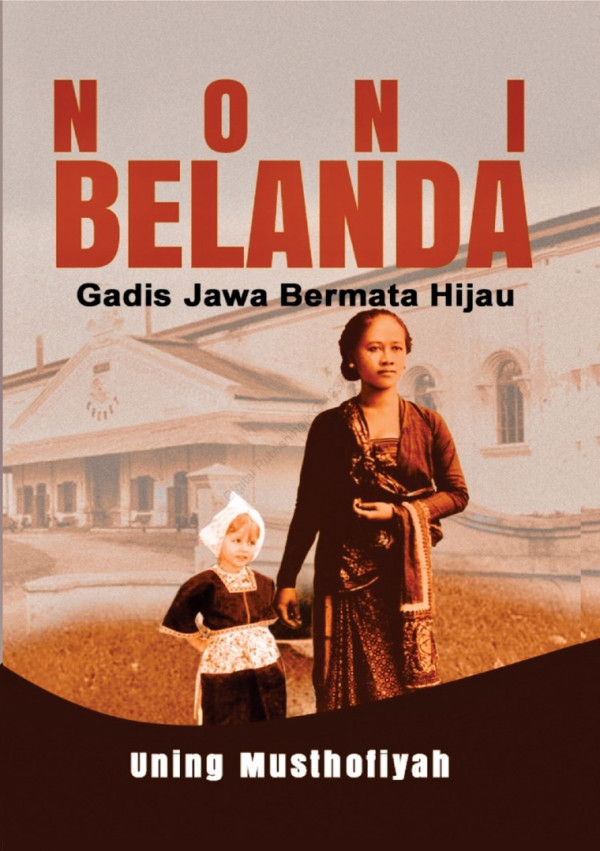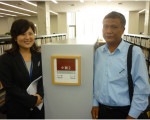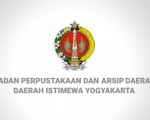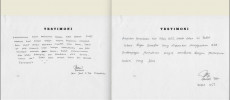
The History of Mixed-Race People: Javanese-Dutch
by:
Hendrikus Franz Josef, M.Si\
(International Relations Observer, CEO of The
https://www.youtube.com/@thehendrikuscenter2794)
The history of mixed-race people between Javanese and Dutch people can be traced back to the colonial period of
The early colonial period was characterized by a strict racial hierarchy, where Europeans held the highest status and the native Indonesians were at the bottom. Mixed-race individuals occupied an ambiguous position in this hierarchy and were often discriminated against by both Europeans and Indonesians. However, some mixed-race people managed to gain social and economic mobility by working for the colonial government or in the private sector.
The intermarriage between Javanese and Dutch people was relatively rare during the early colonial period. The Dutch colonial administration discouraged intermarriage and discouraged relationships between European men and native women. However, this changed in the late 19th and early 20th centuries, as Dutch officials and soldiers began to form relationships with local women. Some of these relationships resulted in marriages and the birth of mixed-race children.
The mixed-race population increased significantly during the 20th century, especially after
Today, there is a growing interest in the history and culture of Dutch-Indonesians and mixed-race people in
The existence and development of the Javanese-Dutch mixed-race population can be attributed to a combination of historical, social, and cultural factors. The intermarriage between Javanese and Dutch people began during the colonial period when the Dutch East India Company established its presence in
One factor that contributed to the development of the Javanese-Dutch mixed-race population was the colonial policy of racial segregation. The Dutch colonial administration established a strict racial hierarchy, where Europeans held the highest status and the native Indonesians were at the bottom. Mixed-race individuals occupied an ambiguous position in this hierarchy and were often discriminated against by both Europeans and Indonesians. Some mixed-race individuals sought to establish their own distinct identity and culture as a means of asserting their autonomy and challenging the rigid colonial system.
Another factor that contributed to the development of the Javanese-Dutch mixed-race population was the changing social and economic conditions of
The Javanese-Dutch mixed-race population has also been shaped by cultural factors, including the fusion of Javanese and Dutch cultural practices and beliefs. The Javanese culture emphasizes harmony, balance, and respect for authority, while the Dutch culture emphasizes individualism, rationality, and innovation. The fusion of these two cultural traditions has created a unique hybrid culture that values both tradition and modernity, community and individualism, and spirituality and rationality.
The Javanese-Dutch mixed-race population has faced many challenges throughout its history, including discrimination, marginalization, and political upheaval. During the colonial period, mixed-race individuals were often denied access to education, employment, and political representation. After
Despite these challenges, the Javanese-Dutch mixed-race population has persevered and has made significant contributions to Indonesian and Dutch society. Many mixed-race individuals have become prominent leaders, scholars, artists, and activists, and have worked to promote social justice, cultural diversity, and human rights. The Javanese-Dutch mixed-race population has also enriched Indonesian and Dutch culture with its unique traditions, art, and cuisine.
The existence and development of the Javanese-Dutch mixed-race population is a complex and multifaceted phenomenon that reflects the historical, social, and cultural interactions between
The history of mixed-race people between Javanese and Dutch people is a complex and fascinating topic that reflects the intertwined histories and cultures of
Opini Lainnya
 OLEH-OLEH DARI JEPANG BAGIAN KEEMPAT
OLEH-OLEH DARI JEPANG BAGIAN KEEMPAT
OLEH-OLEH DARI JEPANGSuatu pengalaman ketika ditugaskanke Kyoto Jepang selama semingguOleh :AlipSudardjoBAGIAN...
 IS GOD AN ALIEN FROM THE FIFTH DIMENSION?
IS GOD AN ALIEN FROM THE FIFTH DIMENSION?
IS GOD AN ALIEN FROM THE FIFTH DIMENSION? by. Hendrikus Franz Josef, M.Si (International Relations Observer, CEO The Hendrikus...
 ANTARA JOGJA DAN KYOTO
ANTARA JOGJA DAN KYOTO
Tentu saja bukan sekedar mensejajarkan nama dua kota yang berada di dua negara. Bukan juga untuk membanding-bandingkan secara...
 Touring & Outbond BPAD
Touring & Outbond BPAD
Pada hari sabtu, 18 Mei 2013, BPAD menyelenggarakan kegiatan turing dan outbound. Kegiatan ini dilaksanakan di Kompleks Makam...

 Kegiatan Penyususnan Katalog Induk Daerah (KID)
Kegiatan Penyususnan Katalog Induk Daerah (KID)